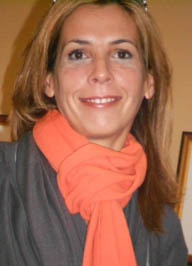The app that saves lives: location-aware CPR/AED notification capability is a PulsePoint away
 A revolutionary life-saving application for smart phones (iPhone and Android) has given dusty CPR training new wheels: smart CPR. What would you do if you were a Fire Chief having lunch while someone nearby needed CPR and you didn’t know it? If you’re Chief Richard Price of the San Ramon Valley Fire Department, you’d be inspired never to let it happen again, and that’s just what he’s done for San Ramon Valley, and now San Jose, California.
A revolutionary life-saving application for smart phones (iPhone and Android) has given dusty CPR training new wheels: smart CPR. What would you do if you were a Fire Chief having lunch while someone nearby needed CPR and you didn’t know it? If you’re Chief Richard Price of the San Ramon Valley Fire Department, you’d be inspired never to let it happen again, and that’s just what he’s done for San Ramon Valley, and now San Jose, California.
“Not long ago I learned too late that someone was having a cardiac arrest right next door to me. I didn’t find out about the emergency until the paramedics pulled up in front of a deli where I was having lunch. I likely could have made a significant difference if I was made aware at the time of the initial 911 call. For several minutes I sat with friends eating lunch while the paramedics were traveling to the scene unbeknownst to me. Up until today, we have relied on fate to place CPR-trained citizens where they are needed at the exact time they are needed. With today’s technology we can do much better,” states Chief Price. A vow and a mission ignited the formation of the noble PulsePoint Foundation (a 501(c)(3) non-profit foundation based in the San Francisco Bay Area), whose mission to help activate nearby citizens trained in CPR to render life-saving CPR, and triangulating nearby Automated External Defibrillator (AED) if necessary is now only a reality in lucky parts of California.
 “The concept behind the PulsePoint app is simple – Dispatch nearby CPR-trained citizens, to major cardiac emergencies occurring in public places, where the potential need for bystander CPR is high,” states Chief Price, where he found a way to have the CPR clock start before EMS arrives. “These lost minutes are crucial in the precious period of time when someone’s heart has stopped beating properly due to a cardiac arrest. For every minute that passes the chances for survival decrease by 10%. After ten minutes, there is very little chance of successful resuscitation. But CPR suspends time, essentially stopping the ten-minute clock, and buys time to allow paramedics to arrive and provide advanced life support,” in hopes that when emergency responders now arrive at emergencies, they will be taking over CPR by a nearby Good Samaritan activated by the app.
“The concept behind the PulsePoint app is simple – Dispatch nearby CPR-trained citizens, to major cardiac emergencies occurring in public places, where the potential need for bystander CPR is high,” states Chief Price, where he found a way to have the CPR clock start before EMS arrives. “These lost minutes are crucial in the precious period of time when someone’s heart has stopped beating properly due to a cardiac arrest. For every minute that passes the chances for survival decrease by 10%. After ten minutes, there is very little chance of successful resuscitation. But CPR suspends time, essentially stopping the ten-minute clock, and buys time to allow paramedics to arrive and provide advanced life support,” in hopes that when emergency responders now arrive at emergencies, they will be taking over CPR by a nearby Good Samaritan activated by the app.
The Public Service Announcement created for the app is electrifying, and asks us all, “Do you want to save a life?” Saying yes was theoretical, because citizen volunteers never had an alert system to activate their life saving skills, until PulsePoint. http://pulsepoint.org/app Now, saying means yes means downloading something special, reminding us all why we took that CPR class, or ever wanted to in the first place.
The app is provided and maintained by the PulsePoint Foundation free of charge. The supporting services are also provided free of charge to public safety agencies desiring to offer the application in their community. Since the app requires an interface to the local public safety communications center, there may be charges from your Computer-aided Dispatch (CAD) system vendor to make this connection. Although these costs are beyond the control of PulsePoint, the foundation is working with the CAD vendors to moderate these fees with reuse efficiencies and grant opportunities.
Chief Richard Price points out: “1,000 people die every day in the United States from Sudden Cardiac Arrest and bystander CPR is performed only 25% of the time. That is a statistic that we hope to greatly improve by crowd-sourcing nearby Good Samaritan who have downloaded the free app to their iPhone or Android device and volunteered to help other citizens in their time of need. It’s Volunteerism 2.0,” and PulsePoint has now made it possible.
 Application users who have indicated they are trained in cardiopulmonary resuscitation (CPR) and willing to assist in case of an emergency can now be notified if someone nearby is having a cardiac emergency and may require CPR. If the cardiac emergency is in a public place, the location-aware application will alert trained citizens in the vicinity of the need for bystander CPR simultaneous with the dispatch of advanced medical care. The application also directs these citizen rescuers to the exact location of the closest publicly accessible AED.
Application users who have indicated they are trained in cardiopulmonary resuscitation (CPR) and willing to assist in case of an emergency can now be notified if someone nearby is having a cardiac emergency and may require CPR. If the cardiac emergency is in a public place, the location-aware application will alert trained citizens in the vicinity of the need for bystander CPR simultaneous with the dispatch of advanced medical care. The application also directs these citizen rescuers to the exact location of the closest publicly accessible AED.
PulsePoint is working with over 150 organizations to assist in deployment of the app, and is available for servicing your community, with a little help from 911-dispatch, who provides the data link to the life-saving alert system. The published API for developers is well guided, as is their mission. Now the question is, do you want to save a life in your hometown today? Have your local government representative contact PulsePoint for deployment, because the price for not having it could be 1000 lives a day.
PulsePoint Contact: http://pulsepoint.org/contact-us Twitter: @1000livesaday
Follow her on Twitter: @paperlesslaw or @eDiscoveryCerts
Inquiries: Connect with her on LinkedIn





Thank you Aleida for sharing this important information with the ConnectedCOPS community. I haven’t been this excited about a mobile app for a long time. Chief Price is a genius!